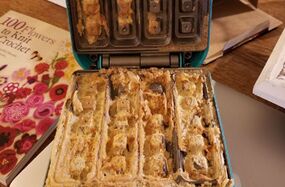新买的华夫饼机里竟有陈年老饼!
|
When Brian McCarthy's daughter opened an Amazon package from her grandmother late last month, she discovered a mini Babycakes brand waffle maker meant to be her Christmas gift. But when she opened the new waffle maker, she found an old, crusty-looking waffle already inside, her father says. Amazon sold the item directly through its Prime service, according to a screenshot of the order viewed by Recode, as opposed to by a third-party merchant that uses the Amazon platform to sell goods to Amazon customers. And the product was not advertised as used or refurbished, according to the same screenshot.
Amazon told Recode it is investigating the incident and wouldn't speculate on possible reasons for the alleged experience. Either way, the case of the crusty waffle serves as a reminder that Amazon customers can still face uncertainty about the origins and authenticity of the products they purchase from the site, even when Amazon itself is fulfilling the order. That's remarkable, considering Amazon accounts for nearly 40 percent of online US retail sales today, according to eMarketer, and considering that Amazon says it cares so much about quality that it employs a vice president of "customer trust." Just in the last few months alone, media reports have highlighted the ease with which shoppers on Amazon can — intentionally or unintentionally — purchase everything from counterfeits, to banned and unsafe products, to items that had previously been tossed in the trash. In most of these instances, the products in question came from third-party sellers, which account for nearly 60 percent of all products sold on Amazon today. The Wall Street Journal, for example, reported last month that some marketplace sellers list products for sale on Amazon that they have plucked out of the trash, and the Journal's own reporters were able to do the same. |









